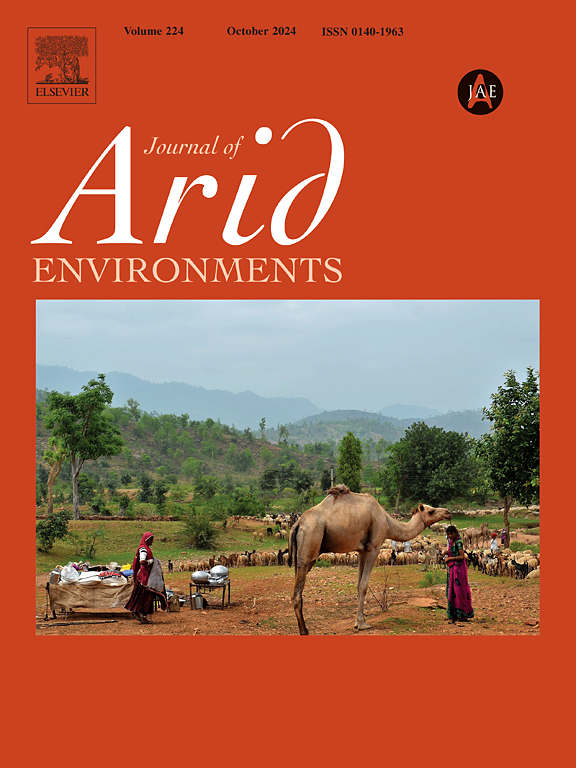Site fidelity of the plains mouse, Pseudomys australis, in refuges during the transition from bust to boom
IF 2.6
3区 环境科学与生态学
Q2 ECOLOGY
引用次数: 0
Abstract
Information on site fidelity of rodents in arid Australia is limited, particularly in the transition from the low (bust) to high (boom) phase of population cycles. These transitions are triggered by periods of high rainfall that can bringing flooding to arid landscapes. We marked 298 plains mice, Pseudomys australis, occupying four sites within drought refuges in the western Simpson Desert, Australia, during a 43 month period that included three large rain events (>100 mm) over 12 months. Thirty-six individuals (12%) were recaptured between sampling sessions of which 31 (86%) were within the same site as the original capture. The interval between initial and final capture ranged from 89 to 1141 days with a mean ± SE of 306.06 ± 42.27 days. The majority of recaptures occurred within 12 months of capture (n = 28), with a smaller number between 12 and 24 months (n = 5). Three outliers consisted of two animals at 968 days and another at 1141 days. Our results show that large rain events were insufficient to cause local extinction of mice at these refuges. At least some animals persisted during large rain events or returned to refuges after standing water reduced, and subsequently bred as environmental conditions improved. We conclude that P. australis shows high fidelity to individual refuge sites.
在从萧条到繁荣的过渡中,平原鼠,南方伪鼠,在避难所的地点保真度
关于澳大利亚干旱地区啮齿动物现场保真度的信息有限,特别是在种群周期从低(低谷)到高(繁荣)阶段的过渡中。这些转变是由高降雨量引发的,高降雨量会给干旱地区带来洪水。在43个月的时间里,包括12个月内三次大降雨事件(100毫米),我们对298只平原鼠(Pseudomys australis)进行了标记,这些小鼠占据了澳大利亚西部辛普森沙漠干旱避难所的四个地点。在两次采样之间,36只(12%)被重新捕获,其中31只(86%)与最初捕获的地点相同。首次和最终捕获的时间间隔为89 ~ 1141天,平均±SE为306.06±42.27天。大多数重新捕获发生在捕获后的12个月内(n = 28),较少的发生在12至24个月内(n = 5)。三个异常值包括两只动物在968天,另一只在1141天。结果表明,大的降雨事件不足以造成这些避难所小鼠的局部灭绝。至少有一些动物能在大雨中生存下来,或者在积水减少后返回避难所,随后随着环境条件的改善而繁殖。我们得出结论,南桫椤对个别的生境具有较高的保真度。
本文章由计算机程序翻译,如有差异,请以英文原文为准。
求助全文
约1分钟内获得全文
求助全文
来源期刊

Journal of Arid Environments
环境科学-环境科学
CiteScore
5.70
自引率
3.70%
发文量
144
审稿时长
55 days
期刊介绍:
The Journal of Arid Environments is an international journal publishing original scientific and technical research articles on physical, biological and cultural aspects of arid, semi-arid, and desert environments. As a forum of multi-disciplinary and interdisciplinary dialogue it addresses research on all aspects of arid environments and their past, present and future use.
 求助内容:
求助内容: 应助结果提醒方式:
应助结果提醒方式:


